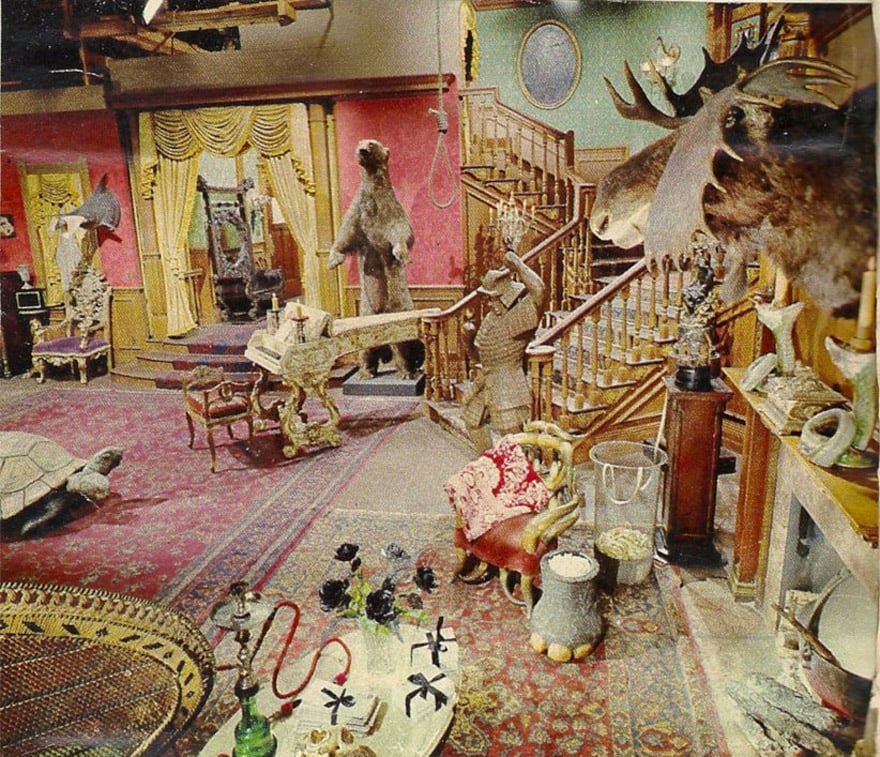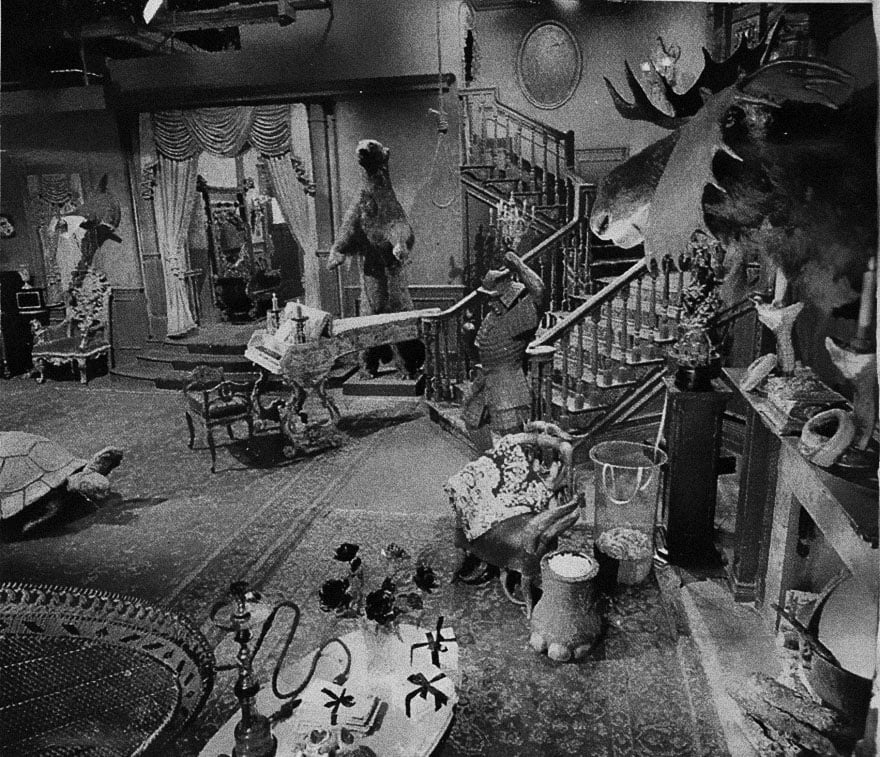If this was filmed in the late sixties using an older orthicon camera it might be an artifact of the way that the image is produced.
I’m just going from memory, but I believe the tubes used a brightness-amplifying screen kept charged with electrons that, when struck by light, would result in a brighter image that could be scanned by a beam. The downside of this technique is that a very bright area would suck up electrons from around it faster than they could recharge, resulting in a dark halo.
I think I remember some of the oldest classic Doctor Who episodes has this visual artifact, as well as some old Beatles TV recordings.
Orthicon halo:
http://www.electricalfun.com/ElectronCafe/Image_O rthicon_tube.aspx
The camera is overwhelmed by the extremely bright light of the flames.
It’s a limitation of the recording systems they had.
I would suggest it’s the shadow the flame throws onto the coat of the glass maker, as they probably had a light source behind the camera while filming.
You’re not wrong. I was simplifying, and your description is more technical.
No offense taken.
I don’t know if Mr Rodger’s was shot on film or video, but either way, the flame was glowing in a wavelength the camera couldn’t pick up. Either it was a color that the chemicals in the film don’t react too or it’s not something the electronic sensors were sensitive too. Probably a high frequency violet bordering on ultraviolet. TV cameras are optimized to record the frequencies of light the human eye can see, making allowances for cost & technological capabilities. They may not work the way you’d expect as red fades to infrared or violet goes towards ultraviolet, especially when using 70’s or 80’s TV cameras in the price range of PBS.
Those old black and white television cameras had a lot of limitations. For instance, things that were white and glossy would cause an extra-bright flare effect that would leave trails across the screen whenever it moved, and it was even worse on video. Guitar companies had to invent a brand new shade of yellow for musicians who performed on TV that still looked white on camera, but didn’t light up like a road flare under the studio lights.
Which is a long way of saying that when it comes to those old cameras I would expect the light from a blowtorch to cause some weird artifacts.
Got a source on that guitar thing? That’s interesting.
Not off the top of my head, but the paint color is called “TV Yellow.”
As a related phenomenon the Addams Family set was painted in colour so that each element would show distinctly on black and white television.


Hot glass emits sodium vapors. Sodium vapors block the wavelength of the light that the film is sensitive to. The torch emits on wider spectrum so the torch flames are leaving an impression on the film.I was wrong. The sodium vapors and the torch plume are in one unified stream. If the flame was different before and after the glass it would be a valid theory.
Looking at the picture, my theory may be wrong. There is a black spot on the torch too far from the hot glass. (Maybe some hot glass dripped on the torch?)
My other theory is that the flames where so bright they had to edit the footage. Old film developers had a technique to darken an area called “burning”. It was not so precise to only cover over the flame so the area around the bright spots got darkened as well.
Modern HDR can have a similar effect. When an algorithm can’t be sure of how dark an area between a dark and a bright spot must be, it make the transition gradually causing the “HDR Effect” where, for example, the sky gets brighter the closer you get to the horizon, building, subject.
Dont ask why it looks like a crack pipe.
I just assumed it was for Mr. Rogers’ well-documented crack habit.
It’s called conservation of energy. The flame is hot and represents a local concentration of thermal energy. In order to concentrate this heat, thermal energy must be drawn from the outside air, greatly cooling it. This causes the air around the flame to appear black on film, as it is giving off much less light than the flame.
/s
Quality shitpost tbh.





